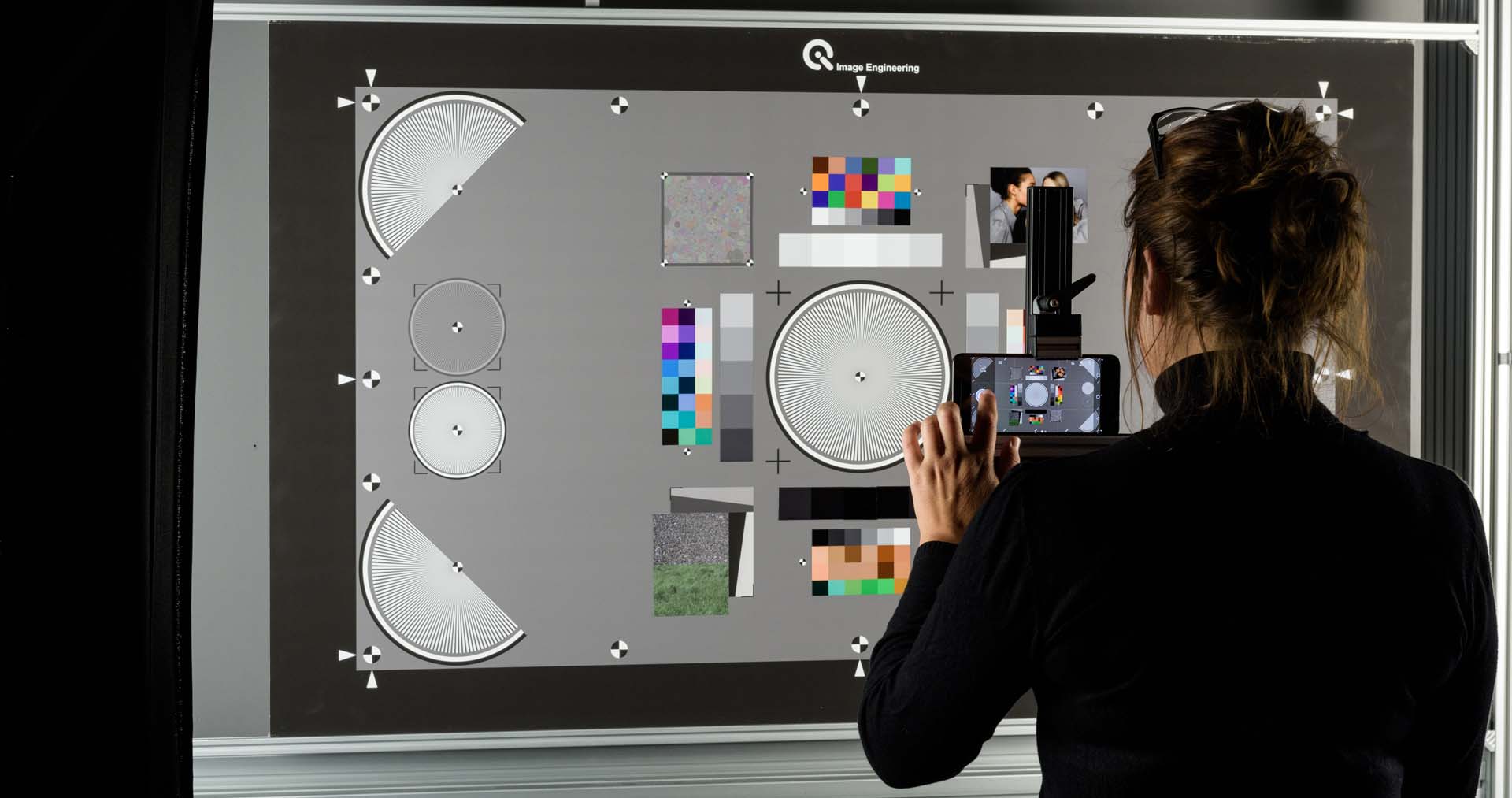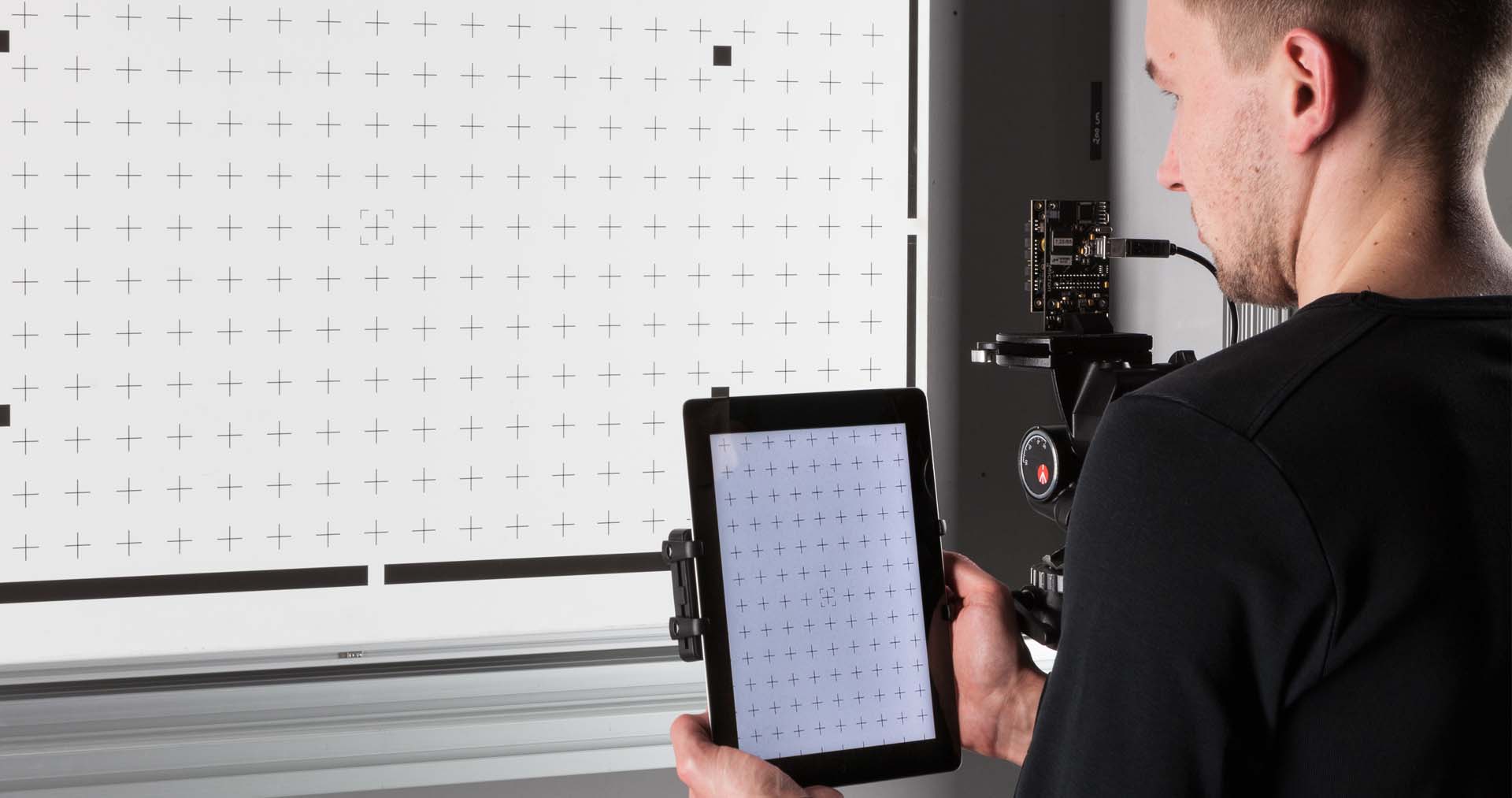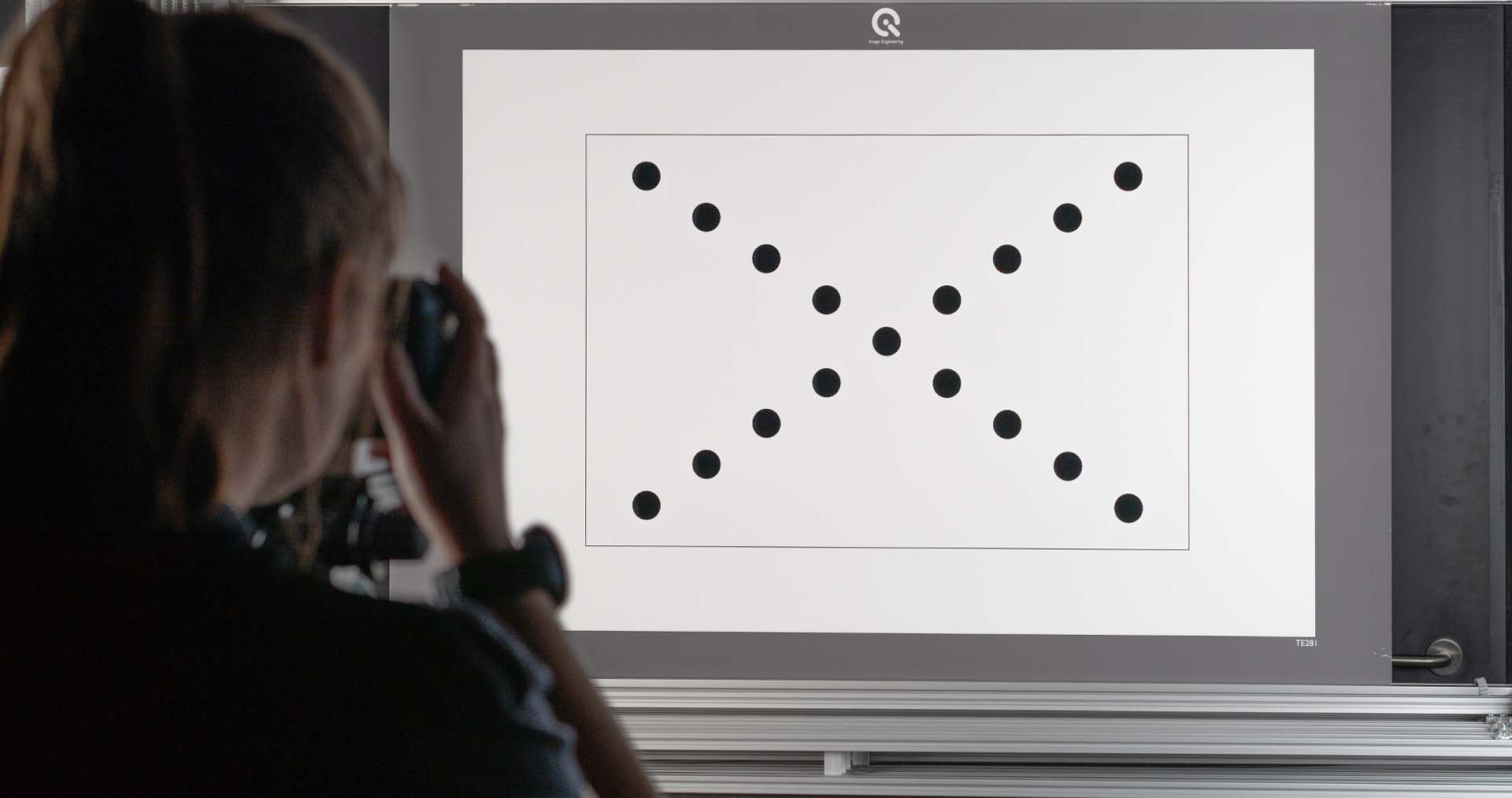“It is exciting to work in the test laboratory at Image Engineering, where we objectively assess dozens of cameras a year”test lab colleague
Indeed, the three characteristics that guide our camera assessments are objective measurements, independent testing, and using test methods that are always based on international standards.

Objective
Most camera users want to know if the camera produces a good image. However, opinions differ on which characteristics make one image better than another; a viewer’s style, preferences, and expectations affect our judgements. In contrast, the test lab performs objective assessments. Objective testing means that lab results are not influenced by the tester’s opinion of the camera and its features.
Image sharpness is a case in point. Evaluations of sharpness can depend on the viewer and also on the in-camera processing. In the lab, we use the TE42 test chart and our bespoke evaluation software - the iQ-Analyzer - to measure resolution, which is reported in line pairs per picture height. Testers follow a set method, capturing the images of the test chart with the camera on a tripod at a specific distance and under a specific light intensity.
Some camera users need only excellent objective assessments such as a measurement of resolution. Others are intended for direct use by people to make art images or capture snapshots of family and friends. This is why the test lab provides subjective assessments, such as photographs of people or test scenes in specific conditions, or assessments of camera handling by experienced photographers. Subjective assessments can be useful. However, one major benefit of an objective measurement is that it is more likely to reflect the camera, rather the tester’s personal preferences.

Independent
Apart from objective measurements, IE is also an independent test lab. Being independent allows us to help ensure the test results can be trusted, valid and robust.
Even before a camera is launched, one can often find some descriptions and evaluations on a website, if only on the website of the manufacturer. Naturally of course, the manufacturer has an aim of selling their camera, and the information about the new model is intended as part of the marketing campaign. By comparison, an independent assessment offers impartiality. This lack of bias is why we can trust independent labs and testers.
As Thomas Gerwers, Chairman of TIPA (currently associated with IE), has noted, "It is essential that camera buyers have the best information about new products to make informed buying decisions. Our aim in this initiative was to work with a state-of-the-art and independent testing lab that has established a worldwide reputation in this regard."

Based on international standards
The assessments performed in the IE test lab are carried out in accordance with standard protocols that are compliant with the relevant international standards. For example, ISO, the international organization for standardization, has published over 22,000 standards since its foundation in 1946. Several are related to procedures for testing aspects of digital image quality.
“Standards…. give world-class specifications for products, services and systems, to ensure quality, safety and efficiency.”
Using standardized test methods ensures that test results can be compared with those produced by any other lab using these same international methods. It also means that the method used is transparent – anyone can find out how our results have been obtained. And, of course, the charts and software we use are also for sale to any customers who wish to test their cameras for themselves.
Over the years, the test lab at Image Engineering has grown to become one of the world’s largest independent test labs. Even as we continue to expand, we have always stayed true to our foundation of providing objective, independent and standard based assessments.
Contact the lab today and see how they can assist with your image quality testing.

